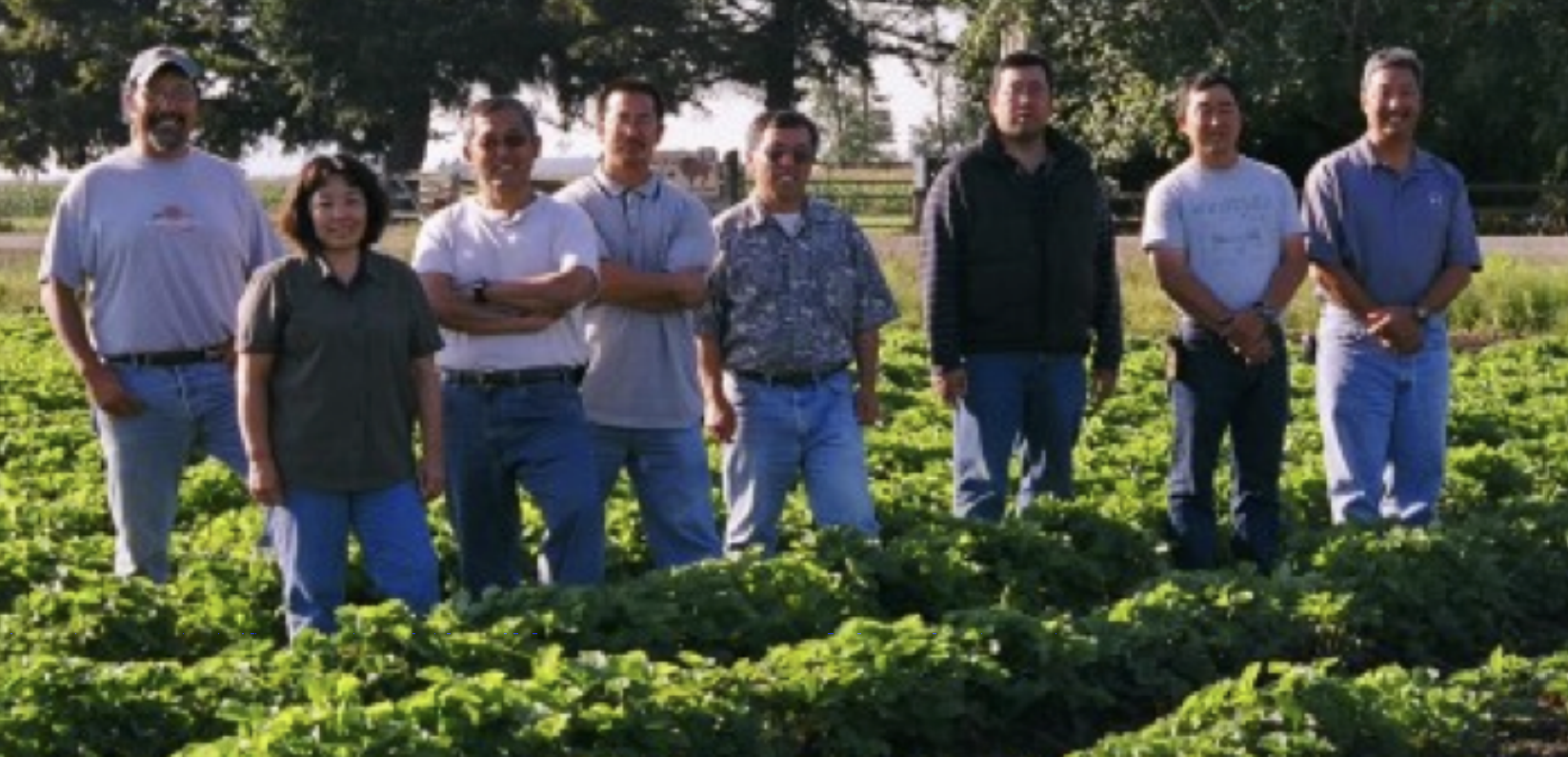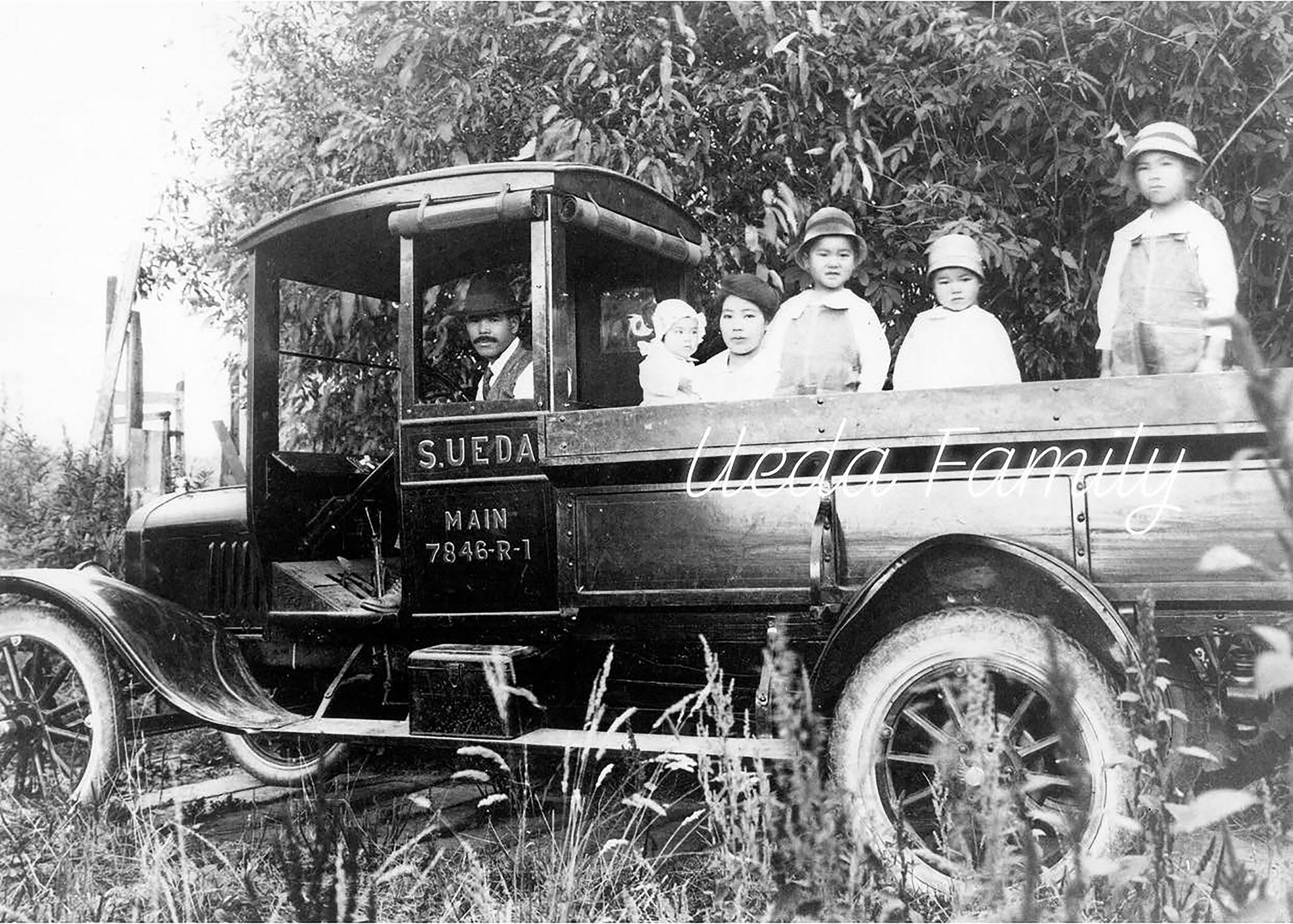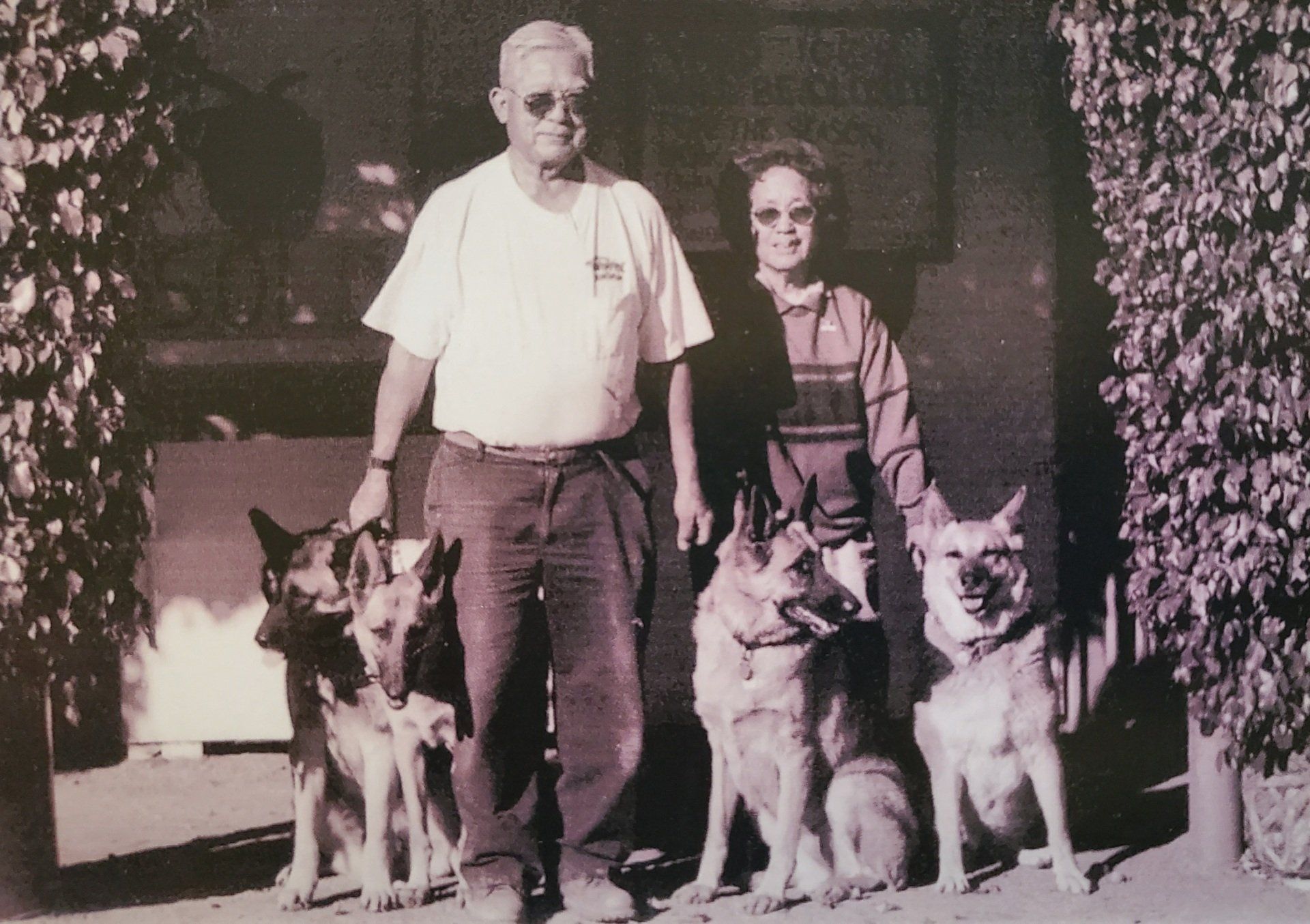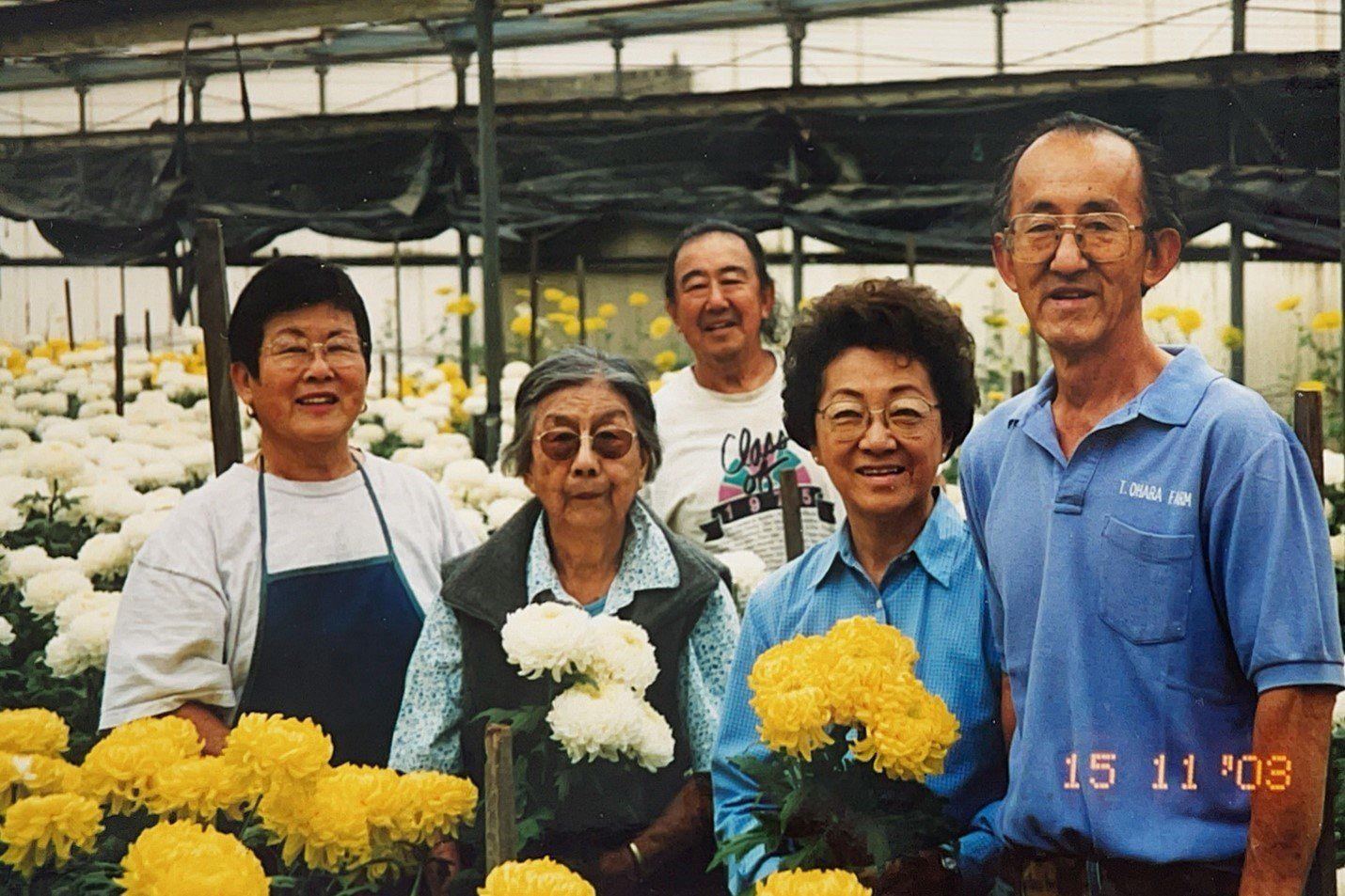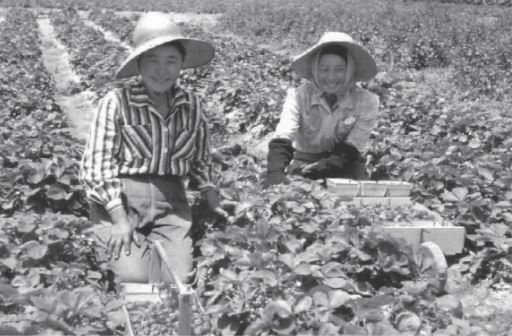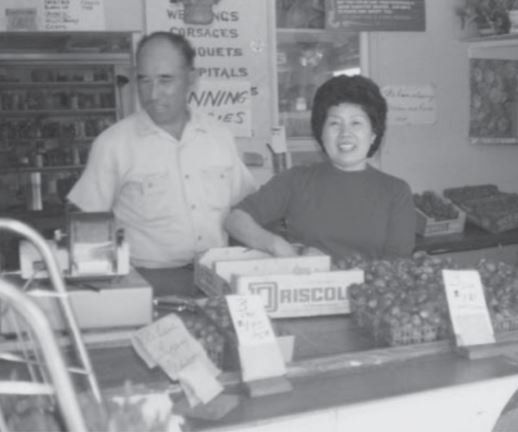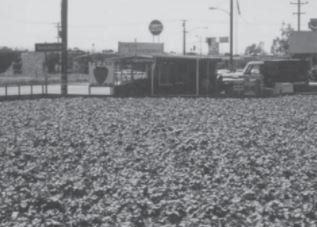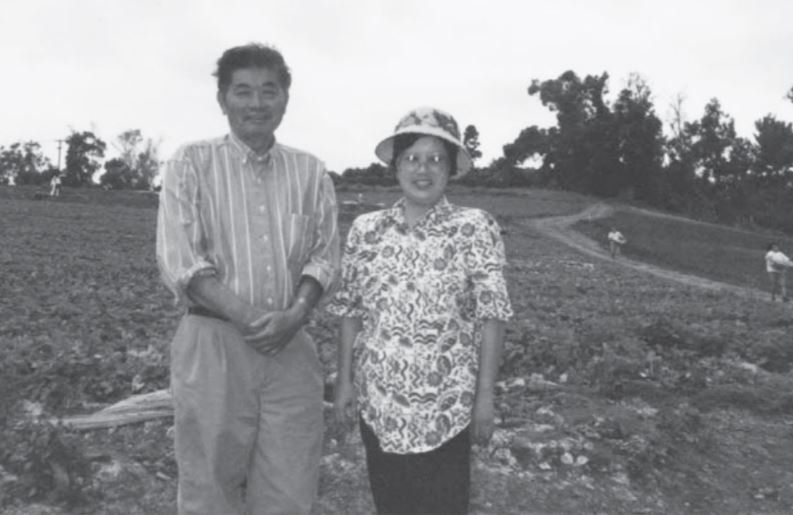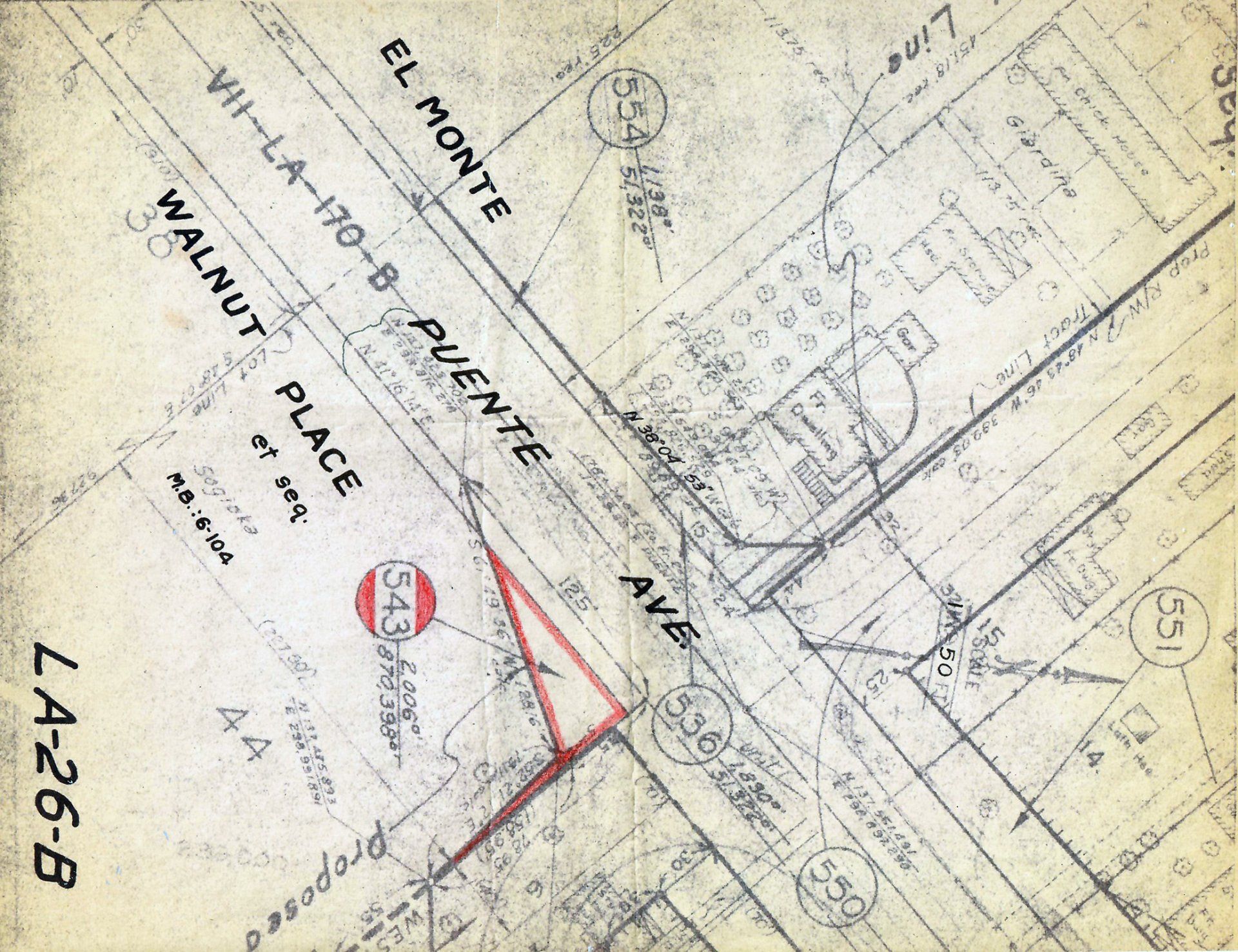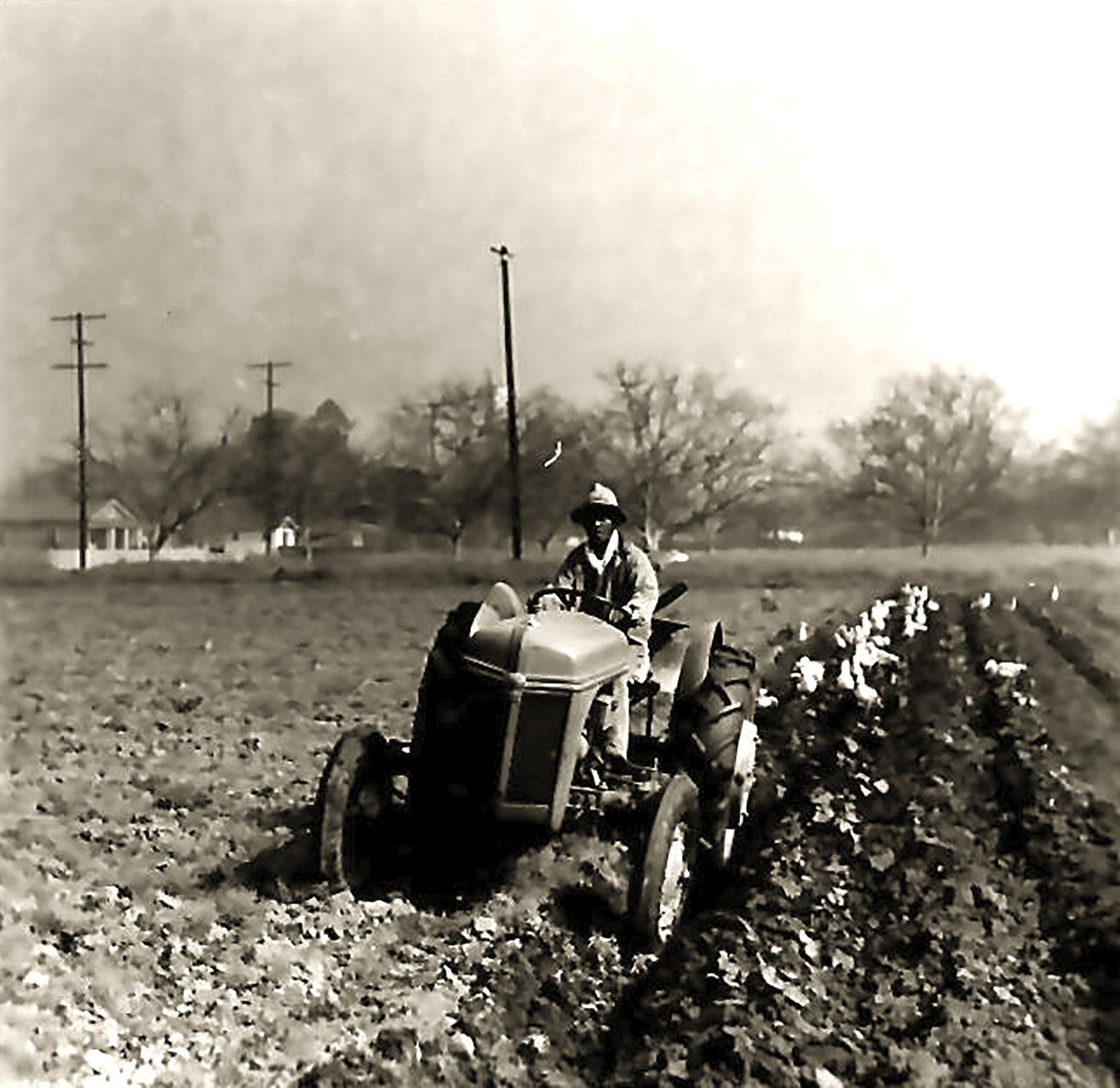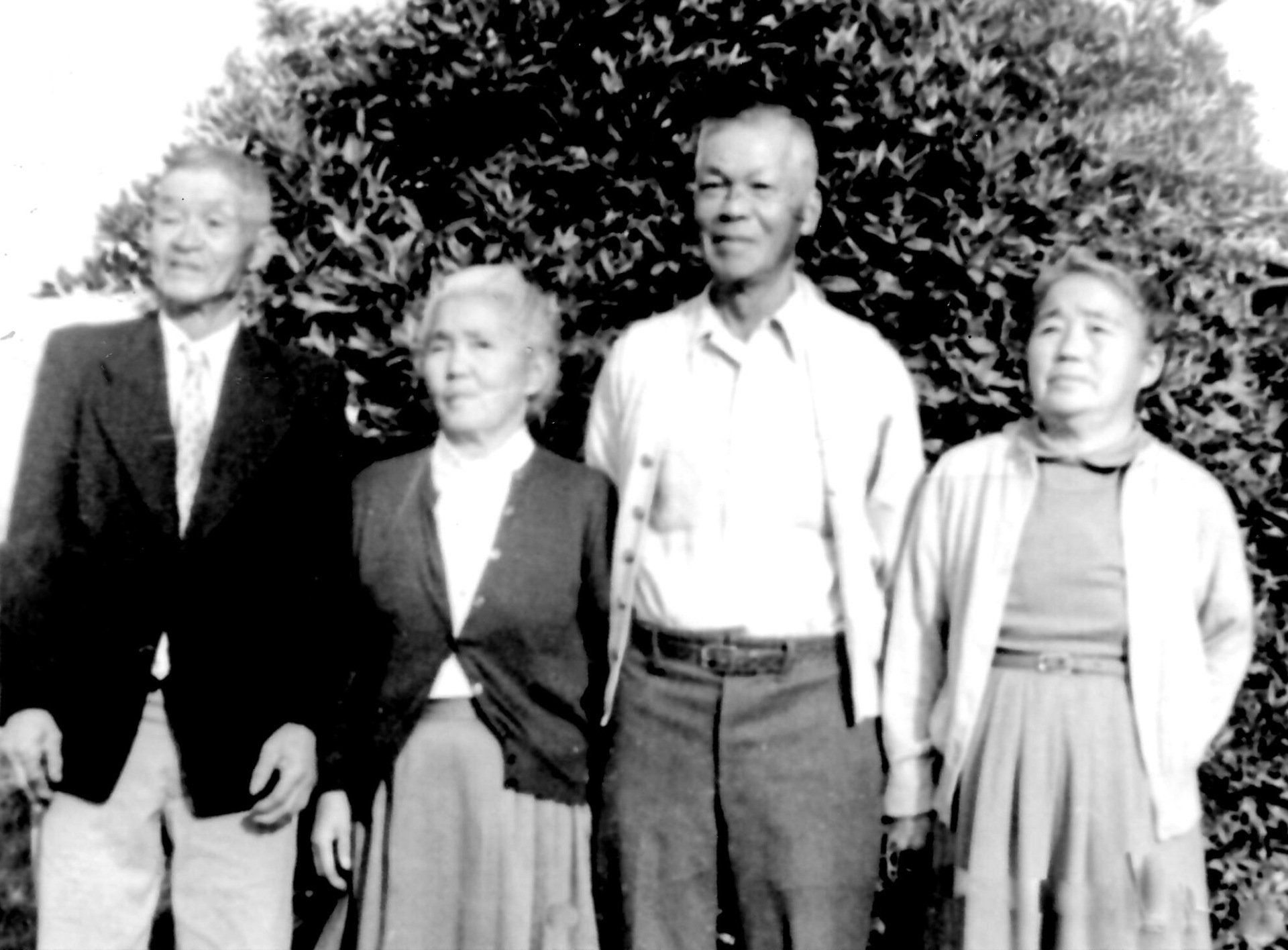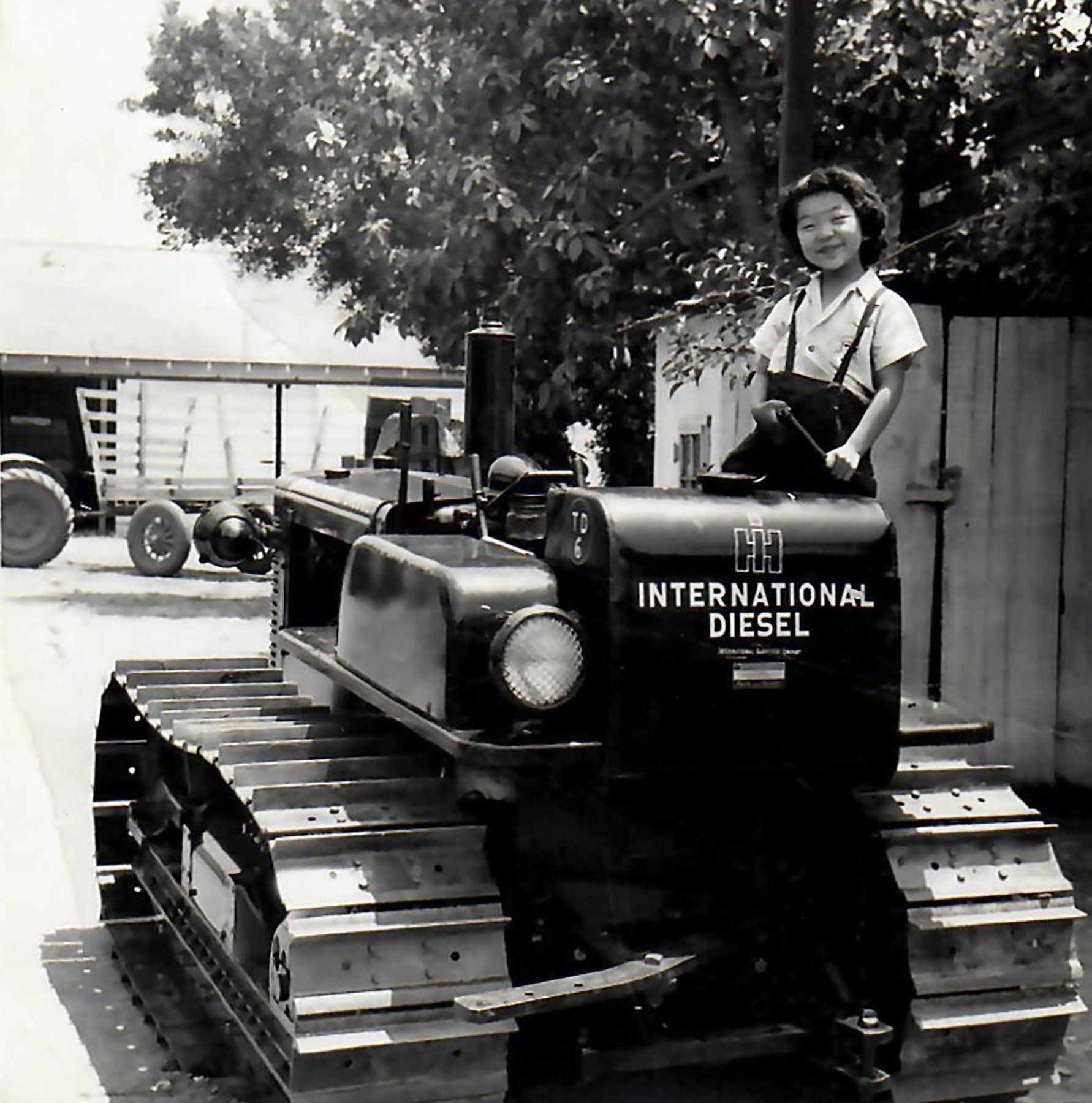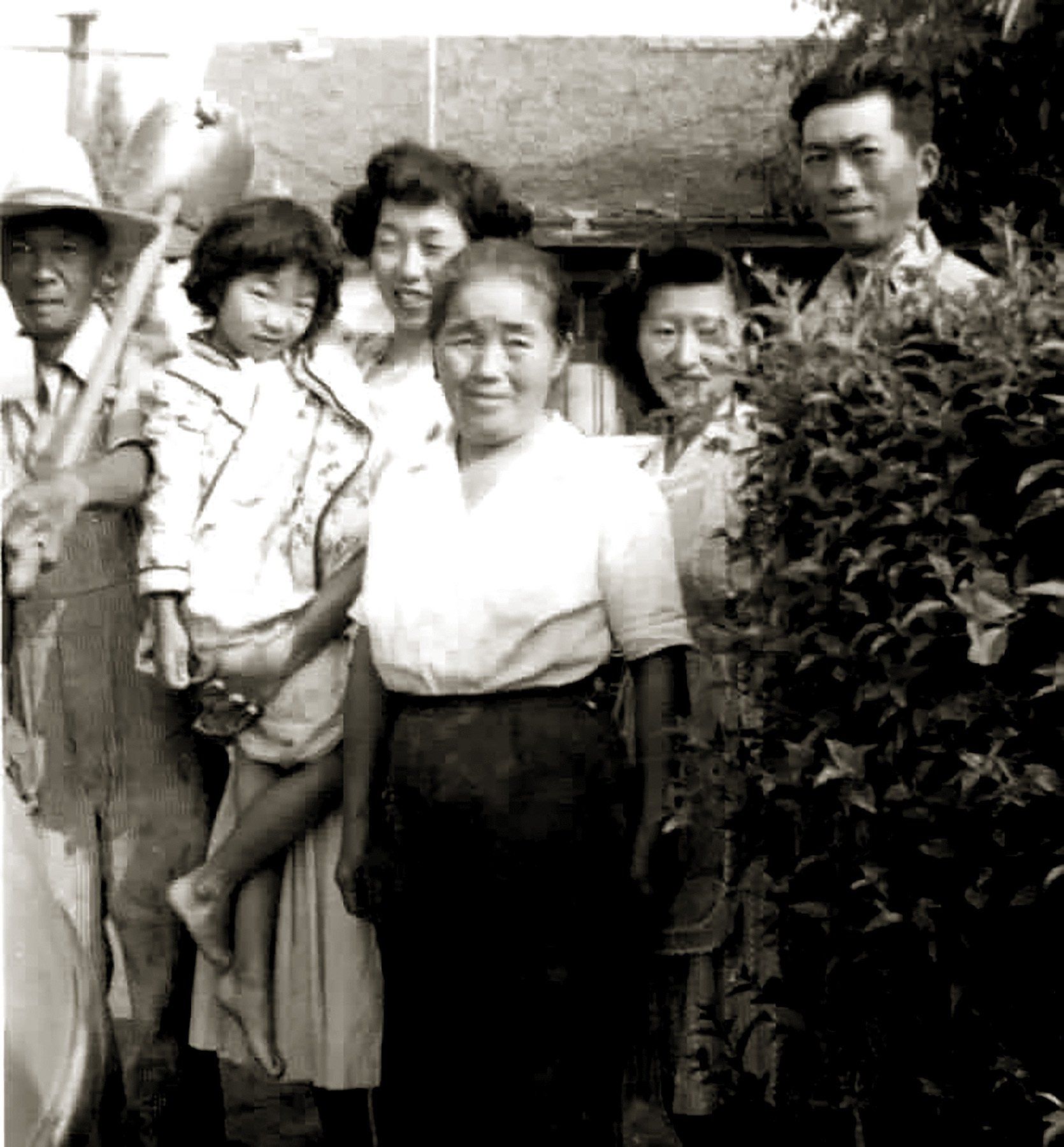Sadakichi and Setsu Sogioka
One hundred and fifteen years ago, my Issei grandfather, Sadakichi Sogioka, immigrated to the United States for a better life. At age 18 years he left Hiroshima- Ken, Japan and boarded the SS America Maru in 1906 to Honolulu, Hawaii. Sadakichi cut sugar cane and saved his wages. He later toiled in the California fields as a farm laborer and sent money home to his family in Japan.
Eight years later he brought his twenty-year-old bride, Setsu Omokawa from Hiroshima – Ken, Kabemache, Japan to California. His brother, Sekimatsu Sogioka, had also immigrated to America and had married Shiye Omokawa, Setsu’s sister. Both brothers and their wives eventually made their way to farm in Baldwin Park, California.
In 1914 Gene Isao, my father, was born in Irwindale and later, his brother Mutsushi in 1920, which established American citizenship for both son. My Issei grandparents were not allowed to own property under California laws, but their sons – as citizens – could. And eventually legal ownership of the 1846 Puente Avenue farm in Baldwin Park. As first-born son, Gene was sent to his Omokawa grandmother in Hiroshima - Ken when he was a toddler. Gene Isao was a Nisei and a Kibei; born in America, raised in Japan and returned at age 14 years.
In California, Gene and Muts attended school between early morning farm chores and late afternoon chores. Summers and holidays were spent working the farm. The family was lucky in that they had good neighbors – the Doyles. Mrs. Doyle was the school principal and Mr. Doyle worked for a mining company and part time in real estate.
Gene chose a career in art after graduation from Covina Union High School and five years later eloped with my mother, Minnie Mayebo, a Selma (Fowler) farm girl on August 18th, 1940. The rest of the family continued to work hard in their fields to bring in crops of asparagus, strawberries, raspberries, blackberries, Japanese potatoes, beets and cabbage. These crops were planted, watered, picked, packed, transported and sold at the market every week. The hard work and sacrifices of the Issei helped to establish the farming community of California.
December 7 th 1941 Pearl Harbor changed everything… the Japanese were now the enemy. Despite that, crops still had to be tended, fruit picked, workers paid and produce sold at the market to survive. Executive Order 9066 (February 19 th 1942) changed that and would force them to leave their farm. The Issei and Nisei were given little time to prepare. Selling personal belongings for pennies on the dollar and perishable produce for almost nothing was sad, costly and humiliating. Their bank accounts were frozen and yet they had to file income tax while imprisoned.
The extended Sogioka family – including Gene, Minnie and infant daughter, Cecile did not want to be sent to the filthy Santa Anita Racetrack eight miles from the Sogioka farm – and later into prison camps in Poston, Arizona. Cecile had been born on January 5 h 1942. My father convinced the family to run and hide in the canyons of California. From February to March 1942 they moved from place to place gathering family members. They hid from April to May but soon exhaustion, tension, lack of food and fear of getting shot by soldiers and roaming vigilantes was emotionally and physically overwhelming. In June 1942 they drove to Sanger and voluntarily surrendered to authorities. A train would take them to Poston.
The Doyles offered help. Mr. Doyle turned to farming and cared for the Sogioka property and remained in contact with Gene and Muts during the war. Doyle’s letters detailing the hard work of farming, nosey FBI agents trying to claim the property and tires are revealing and oddly humorous. His letters describe the changes in the farm industry and racist attitude outside of the camps during and after the war. The Sogioka family was very fortunate to have such good friends and neighbor. Leaving behind the farm, pets and livestock in friendly hands was reassuring.
Sadakichi and Setsu returned to the farm in 1945 when Poston was officially closed. Mutsushi would continue to work the farm with his parents, his wife Sadako Mukai and daughters, Diane and Marilyn.
In 1954 plans for the Ramona Freeway (connecting Los Angeles to Baldwin Park to Pomona to San Bernardino) impacted the Sogioka farm. Eminent domain would effect the family farm. They were paid $265.00 for 2006 sq. feet of land and 30’ of 10” irrigation line.
My parents, Gene and Minnie and young Cecile went to NYC where dad worked as an animator. I was born in 1947 and Alyce a few years later in 1951.
Setsu passed away on March 30 th 1976 and Sadakichi on December 5 th 1970.
Eminent domain. Sogioka's property taken for public use
Sadakichi on the farm
Sadakichi on his tractor
Sekimatsu, Shiye, Sadakichi and Setsu
Setsu and Shiye Omokawa at the train station
Cecile at the Sogioka farm
Sogioka Issei
Sogiokas, Cecile and Mom

